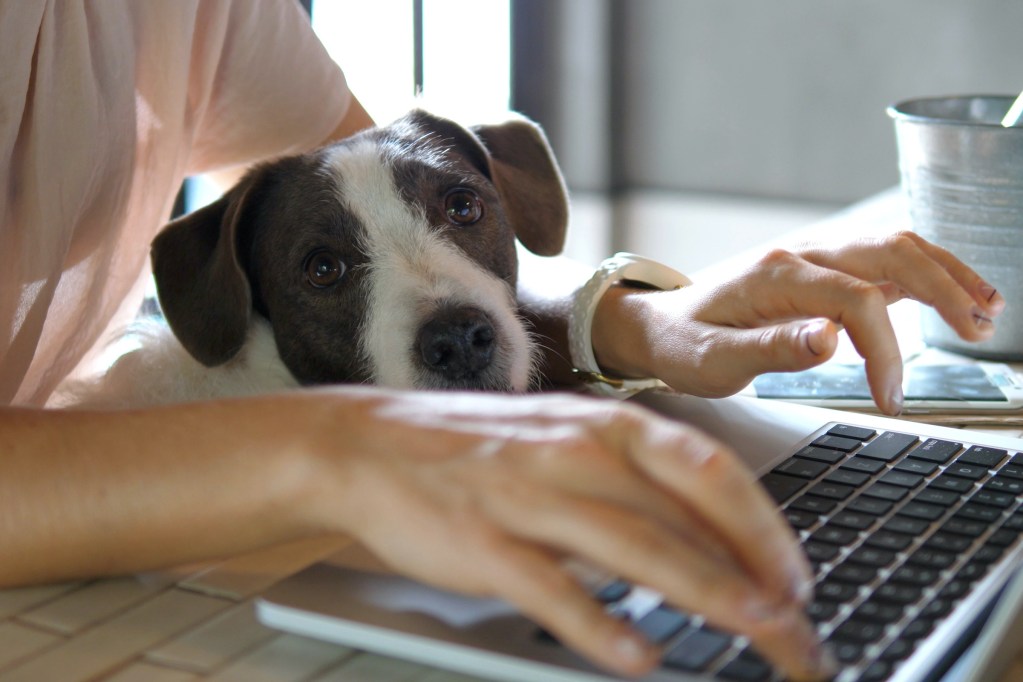The work environment sure has changed in the last few years: more folks working from home, dressing more casually in the workplace, and enjoying the company of a few creature comforts during office hours. Whether you’ve been in the office throughout the pandemic or have newly returned, taking your dog to work can make your job so much more enjoyable.
Before you make Bring Your Dog to Work Day an everyday occurrence, be sure to check off a few things at home and in the office, too. Also be sure you have the approval to bring along your furry friend, and be prepared for a few days (at least!) of adjustments and decreased productivity. After everyone gets used to the new arrangement, though, you’ll be able to enjoy the company of your best friend while living your very best life.
Here’s how to prepare for having a dog at work.

Can I bring my dog to work?
As much as we’d like to give you official permission to bring your four-legged friend with you to work, you’ll need to check your company’s rules. If the regulations are unclear to you, don’t be afraid to ask your boss to clarify them.
Before committing to bringing your dog to work, you’ll want to consider your work environment. Not all jobs are safe for canines, and someone in your workplace may have a dog allergy or phobia. Keep in mind that you will be responsible for any accidents your dog has on site — or anything they destroy.
Once you get the OK from your boss and co-workers and decide your workplace is safe enough for a furry friend, you can prepare to have your dog at the office with you. You’ll need to work with your pup on some training before they’re ready to tag along.
How can I train my dog to come to work with me?
In order to be a pleasant co-worker, a pup should learn at least the basic obedience commands. Leash manners are also a must since you’ll be traveling to and from the office.
The American Kennel Club’s Canine Good Citizen program is one way for you and your pup to gain the skills necessary to be a welcome addition to the workplace. You’ll master commands like “sit,” “down,” and “stay,” as well as practice loose-leash walking and navigating crowded spaces. These skills make a great checklist for any pup who will be hanging out in a public space like your office. Plus, a canine good citizen may be more likely to win over a boss who’s unsure about dogs in the office — a win-win!

How can I prepare for a dog at work?
Aside from obtaining permission and training, you’ll need to take a few more precautions before letting your fur baby tag along to work. You’ll want to have plenty of toys and slow feeders to keep your pup busy, as well as blankets or a bed for midday naps. Snacks or even a meal are also a must for your pup, depending on your work schedule and the length of your shift. Make sure your co-workers know what they can and can’t feed your dog, too.
If you’re able, you may want to make your workspace more dog-friendly. Find trash cans with lids, hide any cables and chewable items, and make some space on the floor for a dog bed. You may need to invest in doggy gates or other safety tools if you must keep them in an enclosed area. Just be prepared to spend the first week or so making adjustments and learning what works best. You’ll get it!
As for your pup, you’ll want to make sure all vaccinations, ID tags, and microchips are up-to-date, especially if your pet will be allowed to wander free in the workspace. You’ll also want to consider taking a long walk (or having a rousing round of tug of war) before you clock in. This will help your buddy get out all that excess energy so it’s not taken out on the office furniture instead.
With these tips and tricks in mind, you’ll be well on your way to training the best four-legged co-worker your company has ever seen. It may take a little extra work at the beginning — talking to your boss, packing your pup’s office bag, helping them adjust — but the joy a dog can bring to your workplace will be oh-so-worth it in the end.



